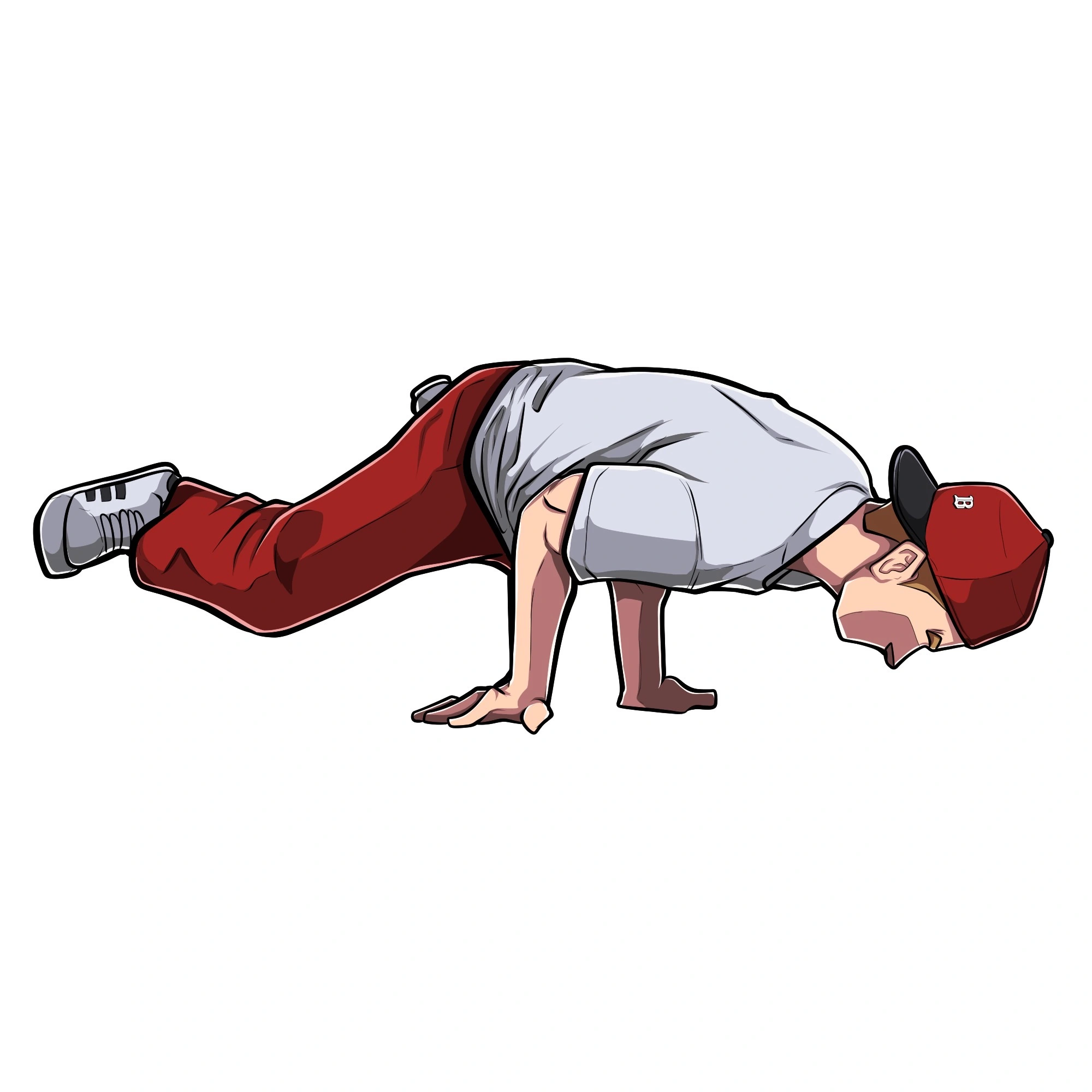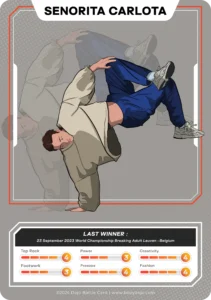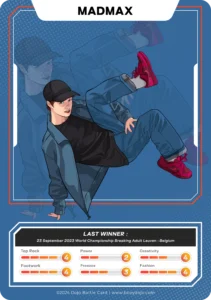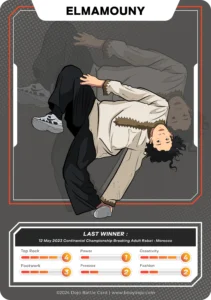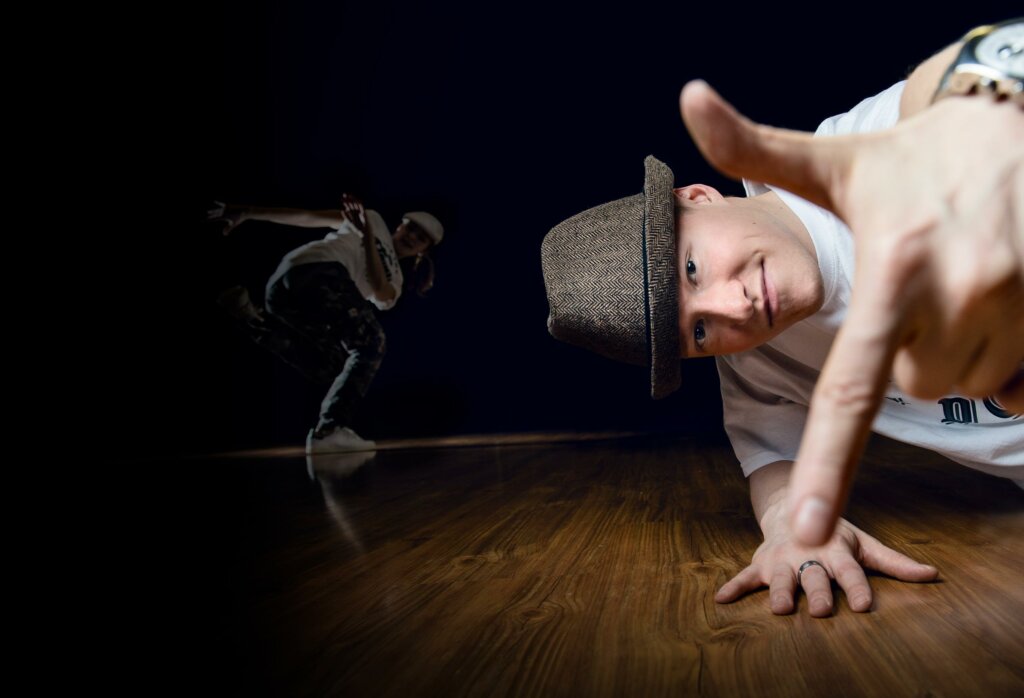Ready to embrace your inner turtle? Turtles are an iconic move in breaking that every young breaker can learn to boost their strength and show their stuff.
The beauty of the turtles move is that it looks spectacular and can be used to transition into and out of other moves, such as swipes, windmills, and various freezes. Plus, you can easily flip your moves so that your sets are always fresh and never stale.
Just like mastering any of the top 10 breakdance moves, it takes practice to master turtles in breakdance. Let’s jump into how to do turtles so you can rise from beginner to expert.
What is the Turtles Move?
Turtles are technically a float and that can apply to various moves. What they all have in common is the primary position breakers get themselves into, supporting themselves above the ground.
The turtles move involves balancing on your hands with your legs in the air. The goal is to push the knees as close as possible to the elbows. When breakers can comfortably get into this position, they should look like a turtle’s shell, which is where the name comes from.
When held in a static pose, which is how most learn how to breakdance, this is called a turtle freeze. On the other hand, a full turtle involves using the hands to perform rotations. Most breakers think of this when they look at the turtle move in isolation.
Countless variations exist for turtles breakdance moves, mostly involving changing the position of the legs. But before you can get into that, you must learn about mastering your foundation and developing the strength, balance, and control necessary to hold the basic turtle position.
Turtles vs. Turtle Freeze
Google this move, and you’ll quickly be overwhelmed by various courses about seemingly different moves. Unfortunately, there are a few misconceptions regarding what a turtle actually is. Much of the confusion comes from the move stationary in a freeze and the other in motion, which is a power move.
So, what are the key differences between these moves?
- Turtles involve continuous movement and transitions.
- Turtle freezes are static and controlled, with one leg extended and the other tucked into the body.
- Like other freezes, the turtle freeze is typically used to display the control a breaker has, whereas a conventional turtle is a cog within a broader sequence.
Like footwork essentials, turtles breakdance moves are often considered to be among the basics a new breaker will learn. It’s also not uncommon to begin with the freeze before moving to full turtles.
The History of Turtles
Before getting into the perfect practice formula for pulling off your first turtle, where does this move come from?
As a core element of hip-hop culture, the history of breakdance starts in the South Bronx, New York, in the 1970s. Unlike other forms of dance, breaking evolved as a backlash to many of the social issues disproportionately impacting Latino and African-American youth at the time.
For this reason, tracing the history of specific moves is complicated. What is known is that many youths learning how to do a windmill at the time were also practicing the turtles move.
The turtle dates back to the beginning of breakdancing, where pioneers like DJ Kool Herc and Crazy Legs were lifting hip-hop culture to mainstream fame. However, like with other moves, it’s impossible to attribute the turtle to any particular inventor.
How to Do Turtles for Beginners
The truth about foundation is that moves like the turtle rely on possessing a minimum amount of strength, balance, and control. Before learning more advanced techniques, like the art of power flow, you’ll need to develop the foundation to gain complete control over your body.
In this guide, we will show you how to perform your very first turtle.
Step One – Start With a Handstand
The basis of any turtle is the handstand. Since the handstand is critical to a range of moves, it’s strongly recommended that you work on getting into and out of handstands before developing an original style.
This is where the true importance of teaching steps up to the plate. Try working with an experienced breaker who can guide and help you explore your creative exploration. If you are trying the turtle at home, here’s how to get into a handstand:
- Squat down.
- Place your hands on the ground in front of you.
- Spread your fingers for extra stability.
- Keep your arms straight and your shoulders stacked over your wrists.
- Push your legs into the air and balance on your hands.
Step Two – Make a Turtle Shell
Once comfortable with holding your handstand, it’s time to create the distinctive turtle shell pose. With your legs already in the air, practice lowering your legs and bringing them down while positioning your elbows in your sides also known as the stab.
How close you can bring your legs will depend on individual flexibility, so don’t worry about forcing the pose at this stage.
Step Three – Master Leg Position
The problem with breaking terminology is it rarely accounts for the countless variations of every move. In a traditional turtles move, keeping your legs tucked in allows you to hold a striking freeze.
The next step is incorporating variations using your legs, increasing your strength, balance, and flexibility. Practice extending them outward while holding your balance. You may also choose to try one-legged variations.
Step Four – Build Motion
Everything up to this point is technically a freeze because there’s no motion. Once you’ve mastered the freeze, it’s time to learn power and how to get it fast to create motion.
This is where the turtle comes into its own as part of a broader set. Adding this motion requires spinning and using your hands to create a circle. Move your right (or left) hand away from your body and follow with your other hand. Nothing else should move other than your hands.
Conclusion
Young breakers must build on solid foundations to make these moves easy. The best way to learn turtles breakdance moves is to work with an experienced teacher who can show you the tricks of the trades.
At the B-Boy & B-Girl Dojo, we have a variety of courses to help you elevate your breaking in every conceivable way. Whether you’re learning turtles, footwork, or how to take your pretzels from good to great, sign up for our latest knowledge drops today.

